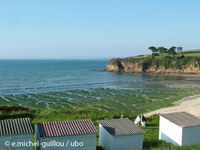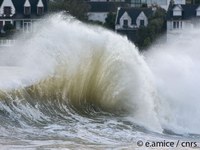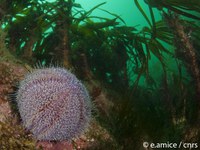1.2.3.2 Marine regulating services

Regulating services are defined as those that regulate ecosystem processes [MEA, 2005; Beaumont et al., 2007; Naber et al., 2008; Liquete et al., 2013 ]:
]:
An example of marine ecosystem waste processing is the mangroves‘ ability to adsorb heavy metals and other pollutants, thus reducing their concentrations in marine environment.
Water purification
Biochemical and physicochemical processes involved in the removal of wastes and pollutants from the aquatic environment including: treatment of human wastes (e.g. nitrogen retention); dilution; sedimentation, trapping or sequestration (e.g. of pesticide residues or industrial pollution); bioremediation (e.g. bioaugmentation after marine oil spills); oxygenation of ‘‘dead zones’’; filtration and absorption; remineralisation; decomposition. The bioturbation activity of faunal organisms within the seabed can bury, sequester, and process waste material through assimilation and chemical alteration [Beaumont et al., 2007 ].
].
 Air quality regulation
Air quality regulation
Regulation of air pollutants concentration in the lower atmosphere as for example vegetation (e.g. in mangroves), soil (e.g. in wetlands) and water bodies (e.g. open ocean) which due to their physical structure and microbiological composition, absorb air pollutants like particulate matter, ozone or sulphur dioxide.
Flood/storm protection
This function relates to the ability of ecosystems to ameliorate natural‘ hazards and disruptive natural events. For example, vegetative structure can alter potentially catastrophic effects of storms, floods and droughts through its storage capacity and surface resistance; coral reefs buffer waves and protect adjacent coastlines from storm damage. The services provided by this function relate to providing safety of human life and human constructions [De Groot et al., 2002 ].
].
 Erosion control
Erosion control
The soil retention function mainly depends on the structural aspects of ecosystems, especially vegetation cover and root system. Plants growing along shorelines and (submerged) vegetation in near-coastal areas contribute greatly to controlling erosion and facilitating sedimentation.
Climate regulation
Regulation of greenhouse and climate active gases: marine ecosystems affect and are affected by atmospheric and climate conditions. For example, while marine plants fix atmospheric CO2, they return it via respiration; moreover, dead organisms, particles, and dissolved organic carbon form carbon sinks in the deep ocean, some of which remains sequestered in the sediment while the remaining is respired at depth and eventually re-circulated to the surface (the biological pump). At present, several sources are proposing the restoration of mangroves as use for carbon sinks (Carbon sequestration).
Weather regulation
Influence of ecosystems and habitats on the local weather conditions such as thermoregulation and relative humidity. For example, the influence of coastal vegetation and wetlands on air moisture and, eventually, on the saturation point and the formation of clouds.
Ocean nourishment
In the terrestrial realm it refers to pedogenesis and soil quality regulation. Natural cycling processes leading to the availability of nutrients in the seawater for the production of organic matter. Pedogenesis could be observed at the margin of certain wetlands and mangroves, depending on hydrodynamic conditions.
 Life cycle maintenance
Life cycle maintenance
Biological and physical support to facilitate the healthy and diverse reproduction of species. The maintenance of key habitats that act as nurseries, spawning areas or migratory routes (e.g. seagrasses, coastal wetlands, coral reefs, mangroves). These habitats and the connectivity among them are crucial for the successful life cycle of species. This also includes pollination (e.g. mangrove pollination), and seed and gamete dispersal by organisms. This service guarantees the maintenance of genetic diversity or gene pool protection.
An important example are the urchin barrens which used to be kelp forests that have been reduced to mostly urchin species due to the over-fishing that reduces natural predators of urchins.
Biological regulation
Includes biological control of pests mostly linked to the protection of crops and animal production that may affect commercial activities and human health and also regulating interactions between different trophic levels thus preserving functional diversity and interactions. Some examples are the control of fish pathogens especially in aquaculture installations; the role of cleaner fishes in coral reefs; the biological control on the spread of vector borne human diseases; the control of potentially invasive species.
Human disease control
Even though the Millennium Ecosystem Assessment focuses on the role of ecosystems in controlling human infectious diseases, the marine ecosystems contribute to regulating conditions that affect public health as well. An example of such is the red tide phenomenon, which results from the proliferation of certain type of algae (K. brevis) which produce powerful toxins called brevetoxins that not only result in death of millions of fish and other marine species, but also could accumulate in tissue of shellfish, which, if ingested leads to severe gastrointestinal and neurological symptoms).

